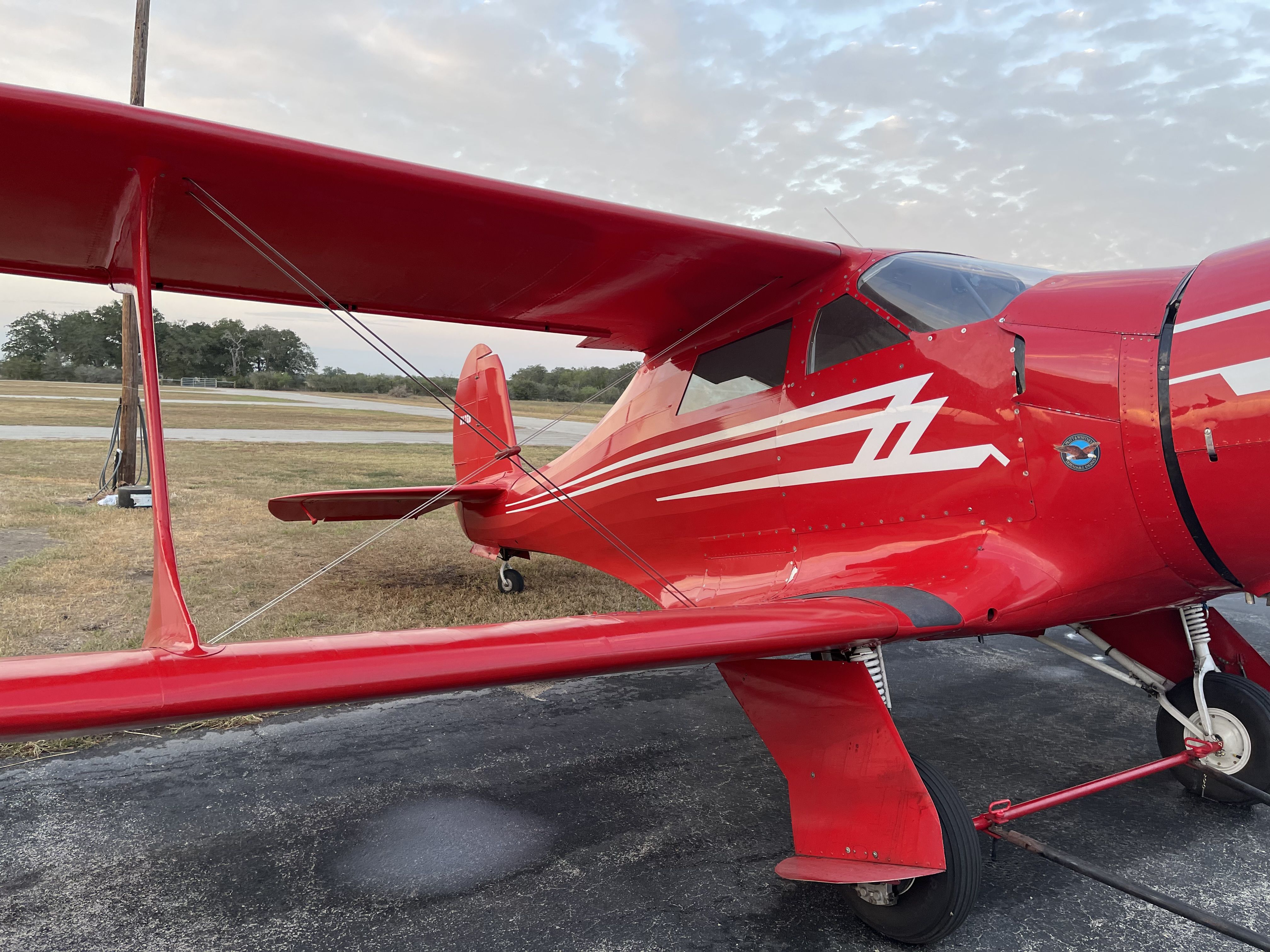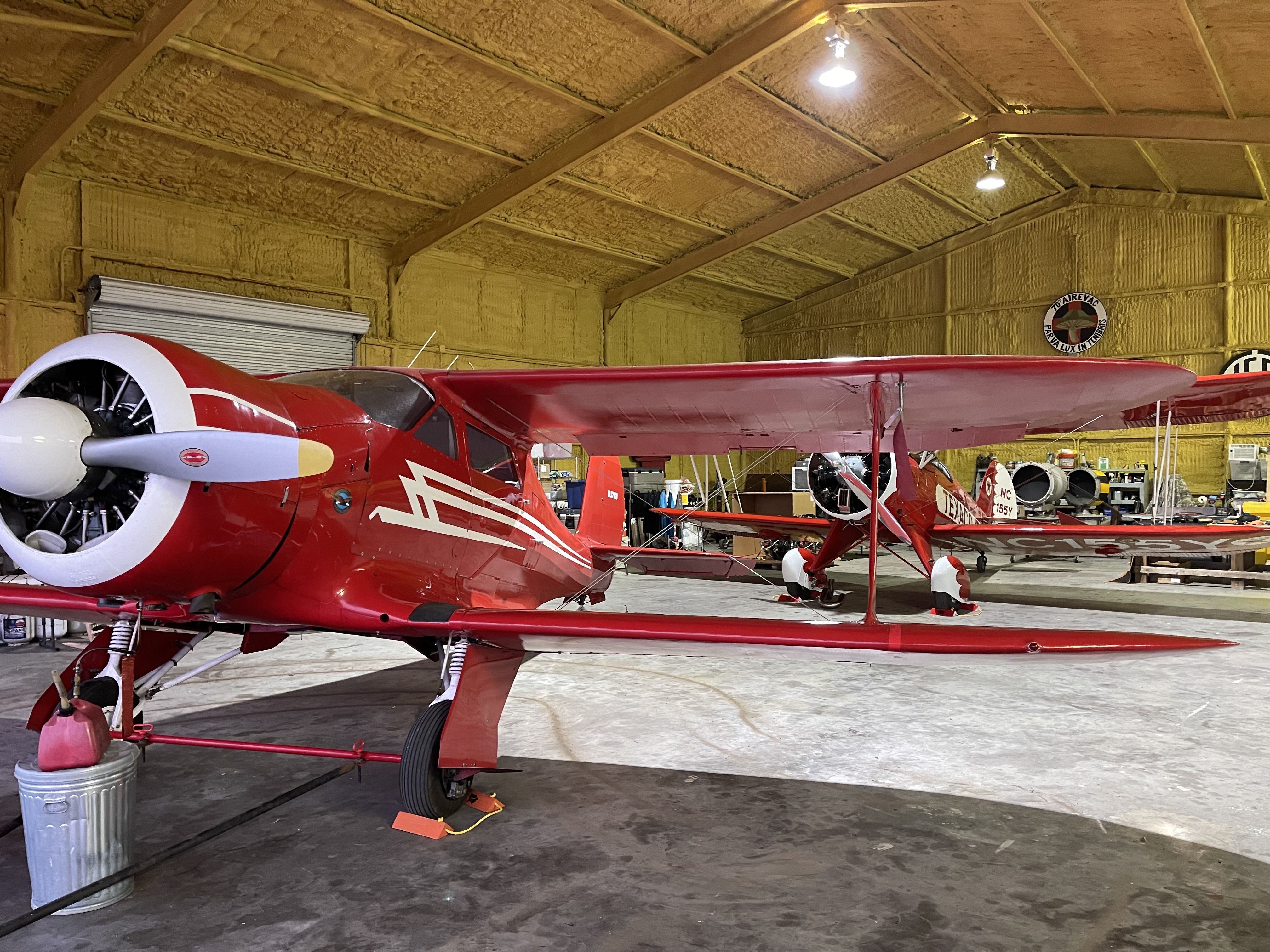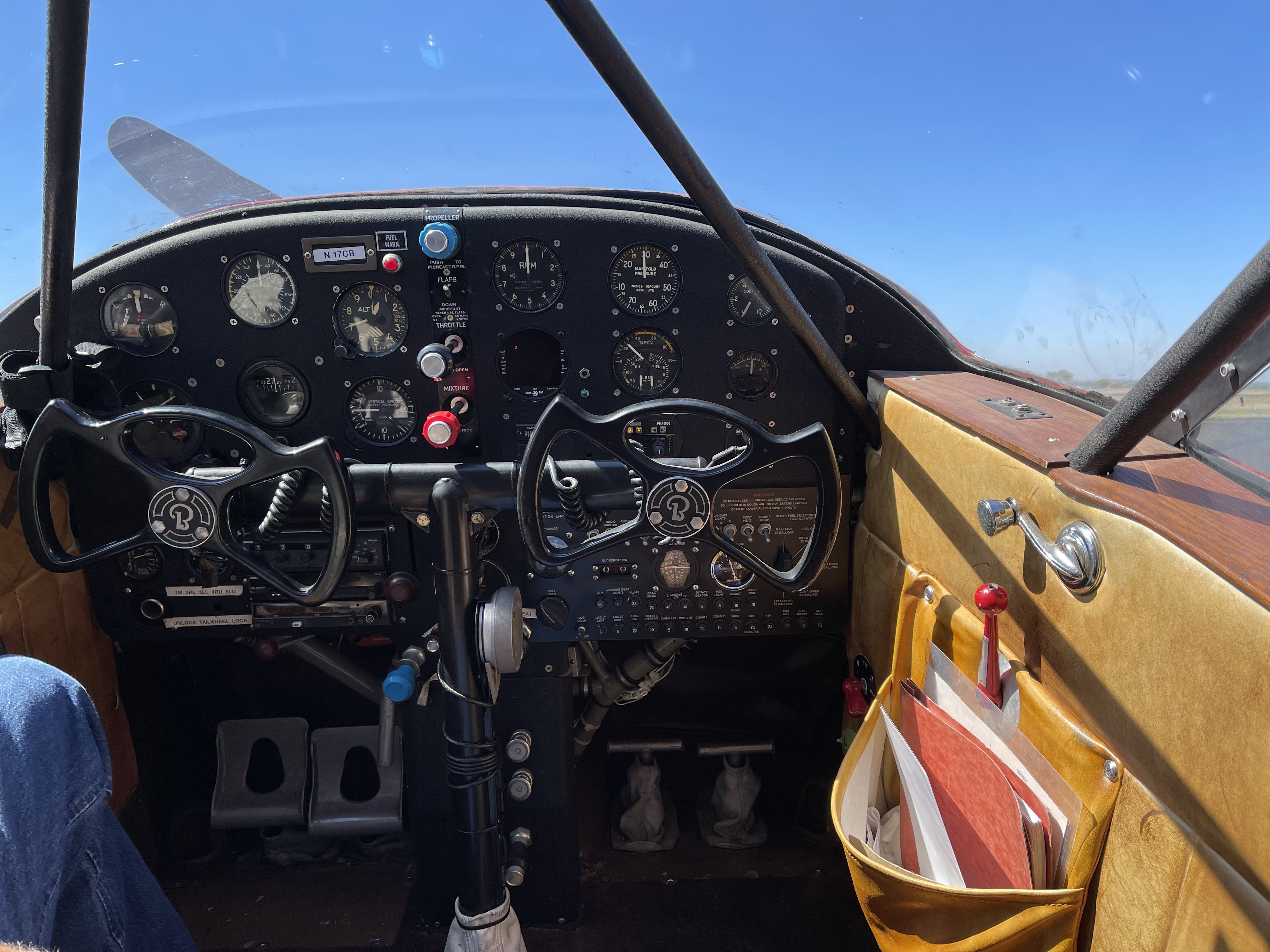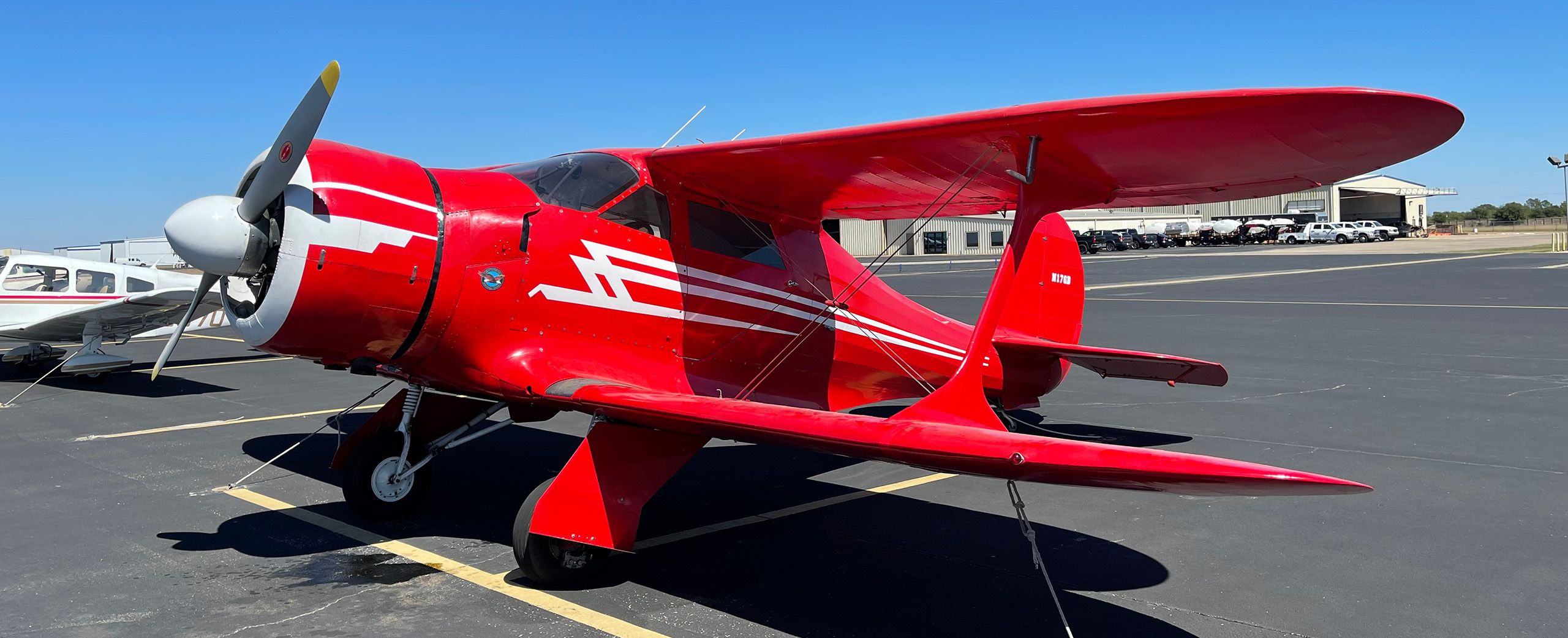
Beech Staggerwing 1944 D17S
What can I say about a Staggerwing that hasn’t already been said? The airplane oozes 1930s Art Deco. It flies even better than it looks, which really says it all.
I typically don’t like to talk about things we are “going” to do. I guess it’s a personal thing, because my folks weren’t much interested in talk. I’ll go out on a limb and break the mold here, because futures are what we do.
The mission of the museum isn’t to build toys—it’s to provide a mentoring tailwind for the youngsters who have an interest in aviation, plain and simple. As far as the airplane…well, it’s a tool. Beech built it for a purpose. Over its 77-year lifespan, it’s had more pilots than Carter has liver pills. We are all just a blip on this airplane’s radar. For it to fit in our operation, it has to fly, inspire, and serve. We’ve got a few well-qualified pilots that feel the same way about mentoring, so it’ll be out and about, hopefully with a kid in the right seat, and eventually the left.
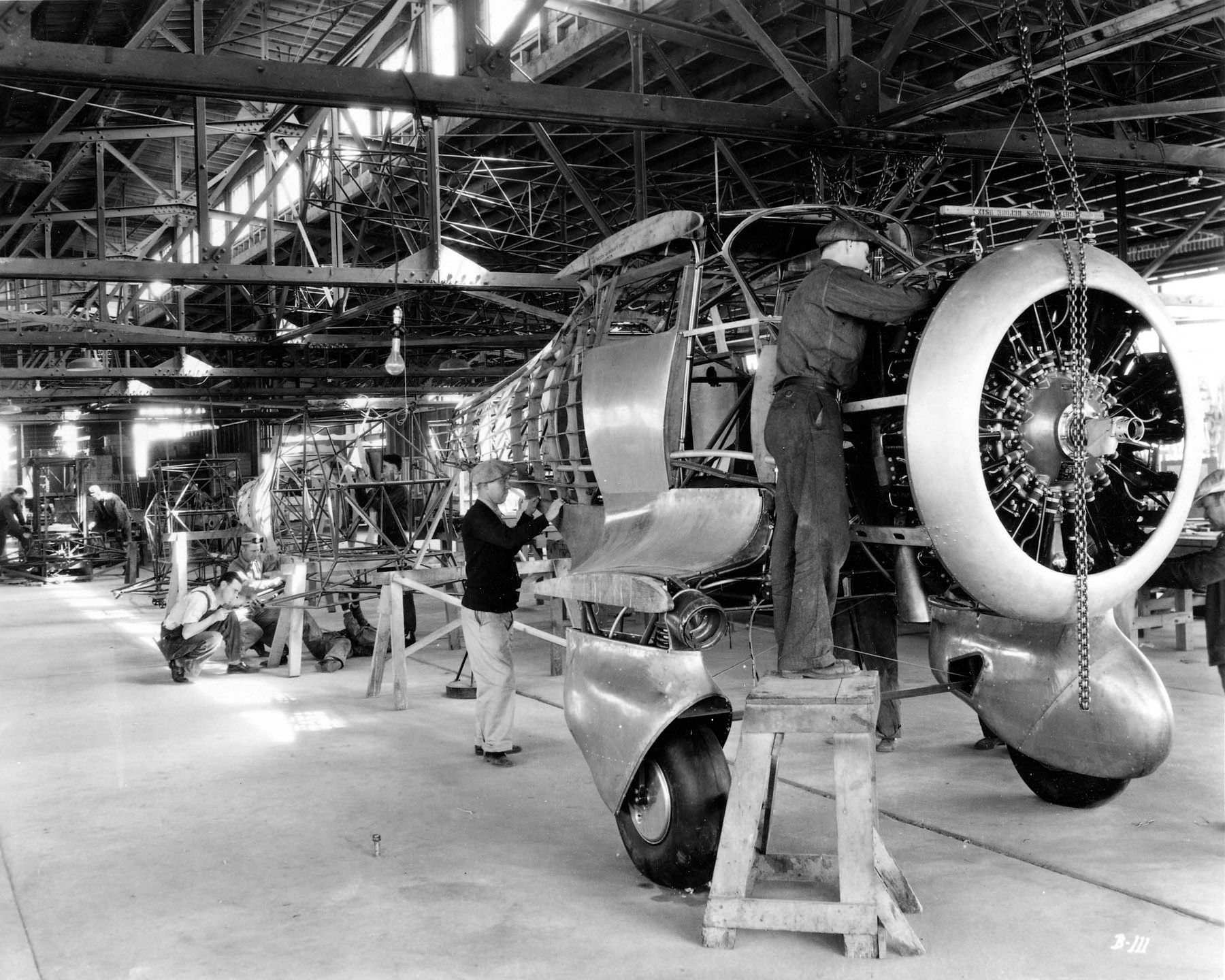
Those of you who follow our page will notice something has changed. You’d be correct, it has. And true to form, this story has as much to do with people as it does airplanes.
It became apparent the Staggerwing was a big financial punch for this little museum. We bought it, well aware of the expenses, but combined with the time commitment and taking us away from other things, it turned out that she just ate too much. We reluctantly began looking for the next caregiver. Finding that person was almost as hard as letting her go, but the pieces finally fell into place and we all were glad to have held a small part of that airplane’s timeline.
Well, no sooner had the dust settled from her departure, the Hodge family in Ft. Worth called us and said they couldn’t see the Texas Barnstorming Museum without a Staggerwing, and generously donated theirs! They were aware of our work with the kids through their pilot, “Fig” Newton, who flew with Spencer in the Staggerwing and his other planes. It was surreal. So in a nutshell, we gained a great airplane, a new fsmily, and another great pilot—Fig—who will be flying it here at the museum with us. Just unbelievable.
Our “Lady in Red” is a 1943 D17S, hailing from the same great lineage as her younger sis. When they rolled her out of the Beech factory in ’43, like all Staggerwings, she was dressed in grey and went to work flying coastal patrol guarding our great nation’s Western seaboard with the US Navy. Stationed primarily in Northern California, she preformed faithfully until her release in 1946. Afterwards, she passed through a few private owners until winding up with Spencer Hodge. Spencer’s story is as fascinating as the airplane’s.
Spencer Hodge was the youngest US airline in history. He began flying for Braniff Airlines at 23 in Convairs, Electras etc. all the way up to the 747 and Airbus. He flew with Braniff until they folded, and true to the saying “you can’t keep a good man down,” started a successful business with his son. Cancer took Spencer way too young, leaving behind a grieving family, a ton of friends, and his cherished Staggerwing.
It makes sense really when you think about it…the youngest airline Captain’s family donates their beloved airplane to a Museum that teaches kids. We will continue to operate it in memory of Spencer, and hopefully our young students will be flying it soon.
We’ll write more about Spencer, the airplane, and our students as we go. Our family just got a lot bigger, not with the airplane, but with the Hodges and Fig. We’re honored and grateful to have them all, so stay tuned.
